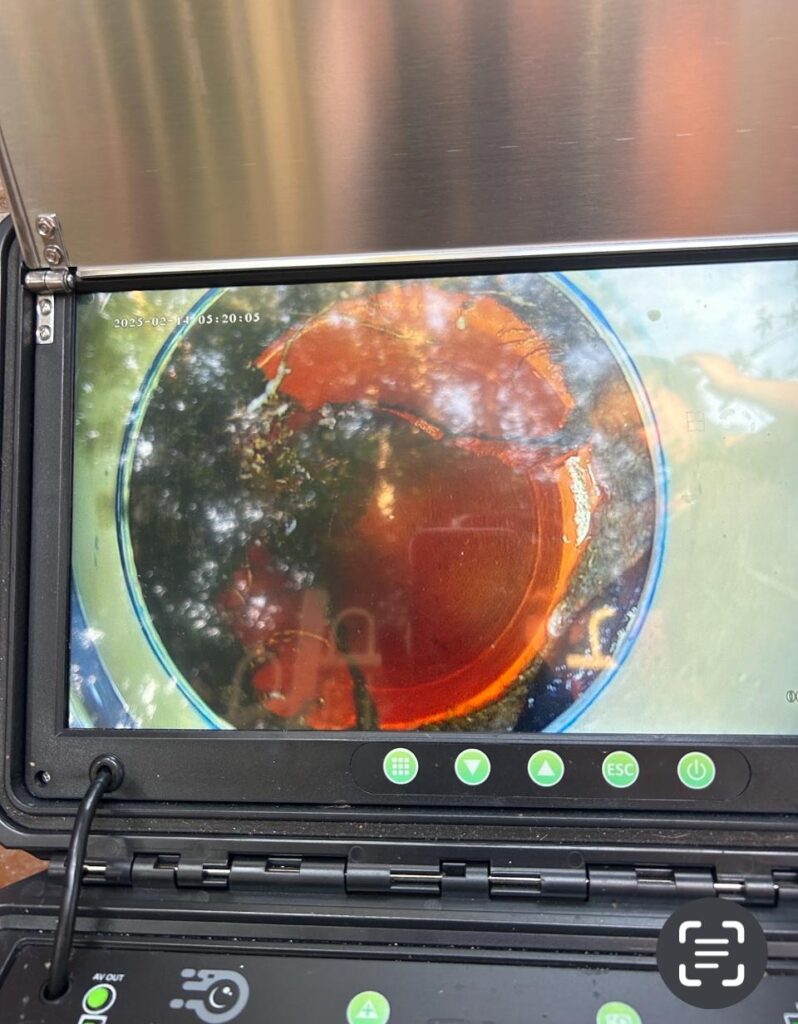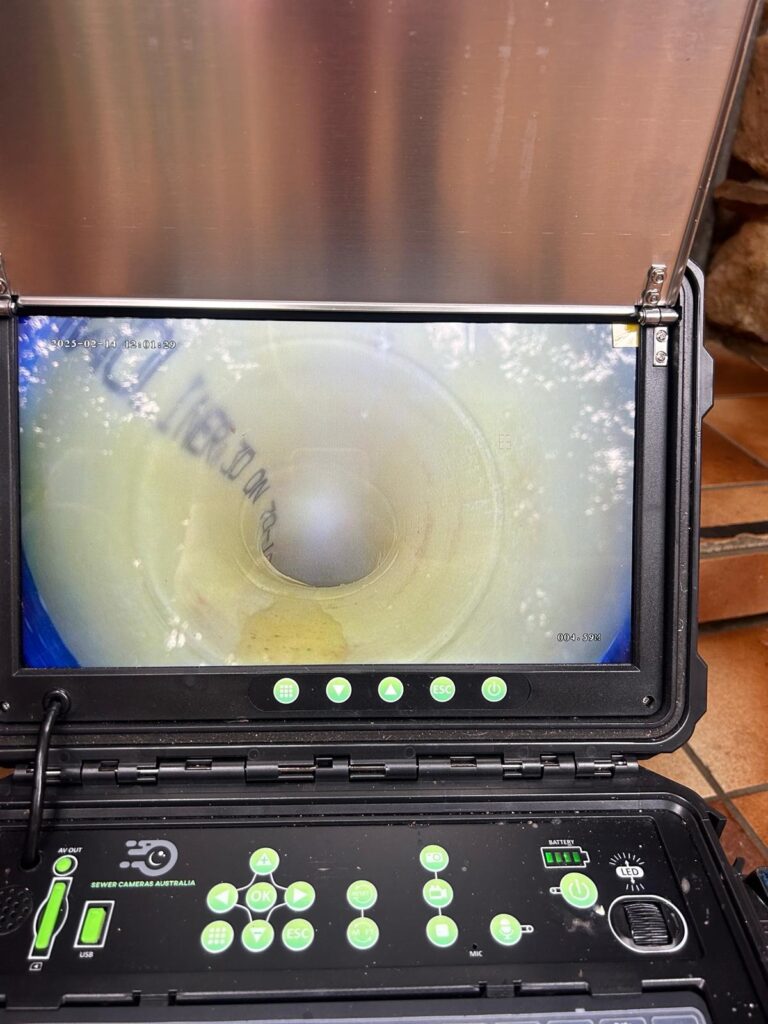Tree Roots and Blocked Drains in Sydney: The Hidden Plumbing Problem Beneath Your Garden
Majority of our drain unblocking work is due to tree roots.
In the leafy suburbs, blocked drains caused by tree roots are a daily occurrence — especially in older suburbs where terracotta pipes still run beneath driveways, lawns, and landscaped yards.
You don’t need to have large trees in your garden for root invasion to happen. Even small root hair systems from nearby trees, street trees, or neighbouring blocks can track moisture and nutrients, breach tiny pipe fractures, and trigger major sewer and stormwater problems. See our guide on what trees to avoid for blocked drains.
Why Tree Roots Invade Drains (And Why Terracotta Pipes Make It Worse)
Tree roots seek out moisture — and broken or aging pipes offer the perfect target. In particular, terracotta pipe joints are porous, brittle, and prone to cracking over time. As they shift or separate underground, they leak water into the surrounding soil.
Roots detect this moisture and grow straight into the pipe, often starting as fine filaments before expanding into thick, tangled masses. Once inside, they:
- Block water flow
- Trap toilet paper, grease and debris
- Crack the pipe walls even further
- Eventually cause collapses or backups
This is why many older homes in Sydney need regular maintenance — or full pipe relining — to stay functional.
Why Killing the Tree Doesn’t Solve the Problem
Some plumbers advise cutting down the tree to eliminate the root cause. This is not only unnecessary — it’s often dangerous.
When tree roots are actively drawing water around a cracked pipe, they help stabilise the surrounding soil. If the tree is suddenly removed, the ground can become waterlogged, unstable, and prone to collapse, especially if effluent has saturated the area.
Removing the tree doesn’t remove the roots inside your pipes — and it may fast-track structural pipe failure by allowing the soil to shift or subside.
How We Diagnose Root Blockages (Without Digging)
CCTV Drain Inspections
We insert a high-resolution camera into the drain to visually confirm root presence, pipe condition, and the exact location of the intrusion. No guesswork. No digging. No assumptions.
This lets us plan the safest, most cost-effective solution, and provide proof if a neighbour’s tree is involved.
How We Remove Tree Roots (And Why Chemicals Aren’t the Answer)
Hydro Jetting with Root Cutting Nozzles
We use high-pressure water jetting, combined with a specialised root-cutting head, to slice through root masses inside the pipe. These rotating heads shred and flush out roots with zero chemical use and no risk to pipe walls.
The process is:
- Environmentally safe
- Safe for all pipe materials
- Immediate in restoring flow
- Paired with CCTV to confirm success
Why We Avoid Chemicals
Chemical root killers may seem like a quick fix, but they:
- Don’t remove physical blockages — just slow regrowth
- Can damage older pipe materials
- Harm soil biology and groundwater
- Don’t solve underlying pipe cracks or access points
They’re a short-term band-aid at best — and they come with long-term risks.uld know the potential risks of planting trees near pipes and take appropriate steps to avoid damage.
If you suspect that tree roots have already caused damage to your pipes, it’s essential to contact a professional plumber for repairs as soon as possible to prevent further damage.
Is a Root Barrier Worth It?
Root barriers are plastic or metal sheets installed between trees and plumbing. In theory, they divert root growth — but in practice, their success is limited:
- They don’t stop roots already inside your pipe
- Installation is disruptive and expensive
- Roots often grow under or around them
- They must be in place before problems begin
They’re better than nothing, but not a long-term solution if your pipes are already breached. are in good condition and not at risk of damage.
The Only Permanent Fix: Pipe Relining
If your pipes have recurring tree root intrusions, it’s only a matter of time before they collapse or require full excavation — unless you reline them.
Pipe relining creates a seamless, watertight liner inside the existing pipe. This:
- Blocks roots permanently from re-entering
- Strengthens weakened pipe walls
- Requires no digging
- Costs far less than full replacement
- Is finished in a day, with minimal disruption
If you’re in the Sutherland Shire and have tree-lined streets or older infrastructure, relining is the most reliable investment you can make in your home’s plumbing.
➡️ Learn more about pipe relining and how it works
Tree Roots & Plumbing Liability: Who’s Responsible?
Many blocked drains are caused by neighbouring trees. So who pays?
In NSW, legal responsibility depends on pipe location and tree origin. If the pipe is on your land, you’re usually responsible — even if the tree is not. However, if a neighbour has been negligent in managing known risk, you may have grounds to seek compensation.
We can provide detailed inspection footage and documentation to support claims.
➡️ Contact us for a CCTV inspection or root damage report
If you are experiencing issues with a neighbour’s tree damaging your pipes, it is recommended that you seek legal advice to determine your rights and responsibilities. Discussing the problem with your neighbour politely and respectfully to find a solution together may also be a good idea.
“Dealing with tree roots in sewer pipes” by Sydney Water:
Final Advice for Sydney Homeowners
Don’t ignore early warning signs like gurgling drains, slow toilet flushes, or outdoor pooling. These are often the first signs of root intrusion — and left unchecked, they lead to costly excavation or complete system failure.
At The Blocked Drain Guys, we combine diagnostic technology, jetting precision, and pipe relining to eliminate root blockages the right way.












